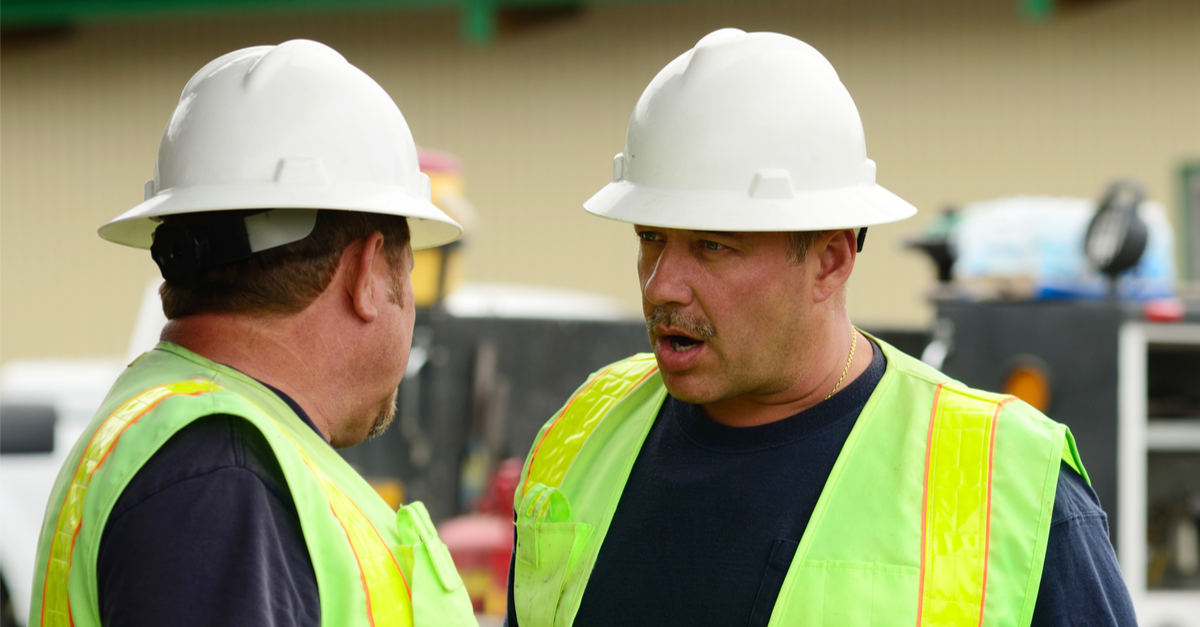Conflicts on the construction site are a common occurrence. Disputes and disagreements are going to arise when you have multiple parties such as general contractors, owners, architects, subcontractors working together to complete a project. These stakeholders have different opinions and interpretations on how things are supposed to be done. Those differing opinions often lead to conflicts.
Remember, the goal of any construction project is to see the successful completion of the job on time and within budget. When conflicts arise, it can seriously threaten achieving that goal. Resolving conflicts can be challenging. It all comes down to making the best business decision to keep the project moving forward. Here are a few tips for resolving conflicts on the construction site.
Don’t Ignore the Conflict
You can’t just bury your head in the sand and hope the conflict resolves itself. Tackling the conflict head-on and working to a quick and amicable resolution to ensure the project stays on track.
Even a small dispute that may appear inconsequential can balloon into a larger problem if it goes unresolved. If you allow the parties involved to work it out on their own, you still need to follow up and make sure that there aren’t any lingering issues. Take action early to avoid further complications down the line.
Get to the Root of the Conflict
It’s important to determine the underlying issues causing the conflict in order to determine the best solution. Conflicts are often caused by different interpretations of plans and specifications, change orders, scheduling, and poor communication.
Actively listening to the opposing party or parties to understand where they are coming from or why they think or feel a certain way is the key to resolving disputes. This demonstrates to the opposing party that their opinions matter and that you are committed to working with them to resolve the issue.
Check Your Emotions at the Door
Conflicts can escalate quickly from a simple disagreement to a shouting match. This isn’t necessarily a bad thing, it just means that the opposing parties are passionate and feel strongly about their opinions. Having a heated debate is one thing, but you should defuse the situation before it comes to blows.
Resolving conflicts is about making the best business decision for the project, not personal feelings. Both parties should sit down stay focused on developing a solution that is in the best interest of the project.
Don’t Play the Blame Game
When conflicts arise, it’s not always a matter of one party being right and the other one is wrong. Sometimes the best solution is somewhere in the middle and you may have to give a little to get a little.
Be willing to compromise and work together to solve the problem. Construction is all about cooperation and collaboration. Taking the “my way or the highway” approach is a quick way to kill a good working relationship and will hurt your business in the long run.
That being said, there are some nonnegotiables when it comes to resolving conflicts like following safety rules and regulations or adhering to building codes.
Be Clear in Your Communications
Poor communication on the jobsite often leads to conflicts. Make sure that expectations are clearly communicated to everyone on the project. Keeping everyone on the same page and up to date with any changes or alterations being made to the project or schedule.
Resolving conflicts doesn’t always result in a win-win situation for all involved. It’s important that once a resolution has been decided upon, everyone involved gets an explanation and is clear on what is expected moving forward. They might not always agree with the decision, but providing a reasonable explanation and following up will go a long way in accepting the decision.
Conflicts on the construction site can be good. Resolving conflicts can lead to a better understanding or a new way of doing things that improve the overall project.
